Customer onboarding is the process that takes place during a post-purchase stage and entails leading a new user through a product or service, teaching how to use it, making a client feel comfortable with it, and showing how to obtain its value. It helps companies build strong relationships with clients, retain customers, and receive more loyal consumers.
Watch the video below to obtain some insights into the customer onboarding process and make clients stay with your brand.
In this article, we’ll explore the importance of customer onboarding and get to know its implementation process. Then, we’ll review the metrics and explore some best practices and examples to grab some inspiration.
Why is customer onboarding important?
The onboarding process is crucial since it’s a touchpoint for establishing good relationships with new customers and encouraging them to stay with a company. An excellent onboarding can improve customer retention, increase customer lifetime value, and turn new customers into raving fans.
The first impression of using a product is fundamental. At this moment, clients decide whether this option suits them, whether it is straightforward or easy enough, and, most importantly, what value this product gives them. According to Wyzowl, approximately 90% of customers say that companies should put more effort into onboarding new clients. A company can educate new users or clients on how to use a product, provide them with onboarding content, and lead them through the post-purchase stage during the process.
To put it simply, a company that wants to retain customers and turn them into loyal clients should create a well-thought-out onboarding strategy. If you are interested in doing it perfectly, let’s jump into the process and the necessary steps.
How to Create a Customer Onboarding Process
- Ensure you know your new clients
- Think of a perfect onboarding strategy that fits your business
- Develop suitable tactics
- Come up with well-planned content
- Monitor and analyze the results
It’s a vital process that needs a good understanding of your audience and the ability to create valuable educational content about your product or service. If implemented successfully, this strategy can bring you long-term and beneficial relationships with your customers. In this section, we’ll review each step of the onboarding process in detail.
- Ensure you know your new clients. You need to know your new users well to guide them through your product successfully. Your buyer persona should contain the information that can help you create a good onboarding strategy. Consider putting it to use to provide your new customers with a seamless experience of getting acquainted with your product.
- Think of a perfect onboarding strategy that fits your business. Before diving into the development process, meet up with your team to decide on the ideal onboarding experience for your customers. Define the best way to present its use so that your newcomers can quickly master everything they need. You should also analyze your customers’ behavior after they review your product card and analyze it to figure out how to approach these users.
- Develop suitable tactics. Once you determine how to approach your newcomers, create a roadmap of your steps. Build a few tactics to onboard new customers. You should also define the necessary marketing methods to use and the timeframes to do it. Choose the right time to start sending email campaigns with your welcoming and educational content. Product tours, videos, guidelines, and chatbots can simplify the process and allow customers to get closer to their goals.
- Come up with well-planned content. When you have a roadmap, it’s time to think of the content. Contact your copywriters and marketers to develop useful content. It can be presented in any form, but the main point is to teach customers how to use your product effectively. Consider writing appropriate and easy-to-understand email content and video scripts and developing user-friendly interfaces. After you finish with the copy and design, it’s time to bring it all to life. Let marketers create onboarding emails and search for professional agencies to produce educational videos.
- Monitor and analyze the results. Once the campaign is implemented, keep an eye on the information you have about your customers. Pay attention to the content they prefer to read and products they like and dislike. This way, you will be able to identify the drawbacks of your educational content and instructions on how to use your product. Over time, you’ll need to improve the process if you see that the results are unsatisfactory.
The process is clear now, so let’s proceed to the metrics.
Customer Onboarding Metrics
To receive insights into your onboarding strategy’s success, consider monitoring the main performance indicators. Here is a list of the most critical metrics to bear in mind:
- Engagement. Having some insights into your brand engagement can help track the progress, identify and eliminate pitfalls, and take the necessary measures. You should find out whether your client understands your product and whether this person is going to use it. Do this by tracking login activity, usage of the features, and onboarding abandonment.
- Progress. Before conducting your training, consider creating a schedule and dividing it into several parts. This way, it will be easier for new users to perceive and remember new information. Bear in mind that people can concentrate for 90 minutes maximum, and then they need a break. Approach new customers in different ways — with tutorials, step-by-step guides, videos, and chatbots to obtain the best results. Afterward, you will be able to assess how well you did the job of letting your users master your product as quickly as possible.
- Feedback. Surveys are a great way to determine how valuable and complete your onboarding is with all its materials and tools. Newcomers will help you identify the drawbacks of your service and eliminate them.
Now that you know the metrics, let’s review some of the best practices you can use to onboard new users.
Customer Onboarding Best Practices
- Use an email automation platform to send educational content
- Introduce your product with a short video
- Design interactive product tours
- Answer your customers’ questions with chatbots
- Create webinars to let customers master their skills
Generally speaking, companies utilizing multiple channels to onboard new customers is a great strategy. Brands that use marketing tools like welcome emails, step-by-step starter guides, tutorials, educational videos, and product tours can build strong relationships with new clients and make the most out of it. These tools provide newcomers with a consistent and seamless experience. Consider applying the following tactics to improve your onboarding.
Use an email automation platform to send educational content
Emails with helpful information can guide your new customers through the process of exploring your product. If you want to simplify the process of sending such emails, use a special automation platform. SendPulse allows you to personalize your educational emails and set up your send-out.
For instance, you can use the platform to share some tips with your new users on how to make the most of your product, send product tours, webinars, tutorials, etc. You can even implement cross-selling by offering some additional items to the existing product. Say, if a customer bought a camera, you can offer them a memory card.
Introduce your product with a short video
If you have a visual product, the best way to introduce it is by creating a short video. It can be 1-2 minutes in length but should contain some essential facts about a product.
For example, Rare Beauty by Selena Gomez provides makeup tutorials on Instagram to teach customers how to use its new eyeshadows.

Design interactive product tours
If you aim to let customers get more from your product, you should be ready to create great product walkthroughs. They help explain how to use a product and guide new users to the moment when they realize its value. Each product or service is unique in its features and benefits and requires an individual approach. However, don’t forget to be consistent, include the core value, and be short and sweet in your product tours.
Let’s take Slack, a platform for business that helps bring all team members together, for example. It provides new users with interactive onboarding and a chatbot that guides them through the process.
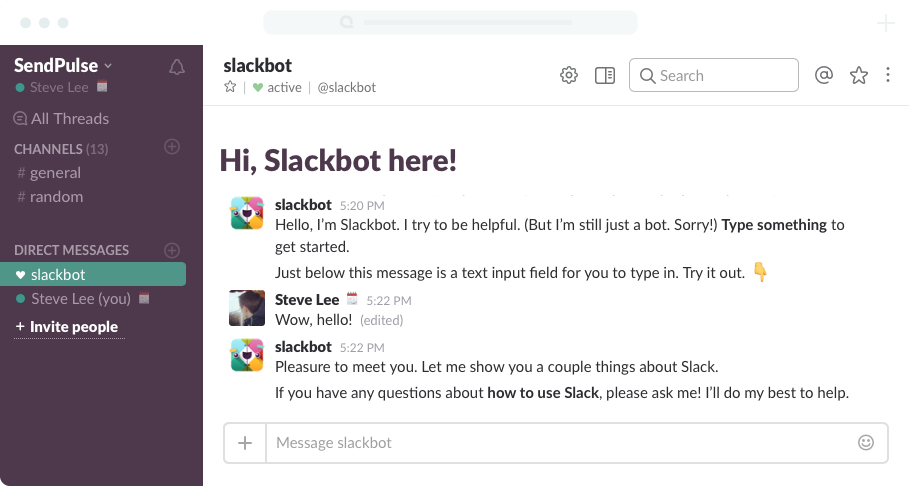
Answer your customers’ questions with chatbots
Onboarding is a process that requires different amounts of time and effort from different users. That’s why you should always be in touch with your customers to provide some help. To answer some FAQs, consider using a chatbot. As a result, new customers will receive instant answers to fundamental requests and resolve some of their issues in seconds. With SendPulse’s chatbots, you can easily set up auto-replies in Telegram, Facebook, and Whatsapp.
For example, Plum, a back-office solutions provider, uses a chatbot to onboard new users.
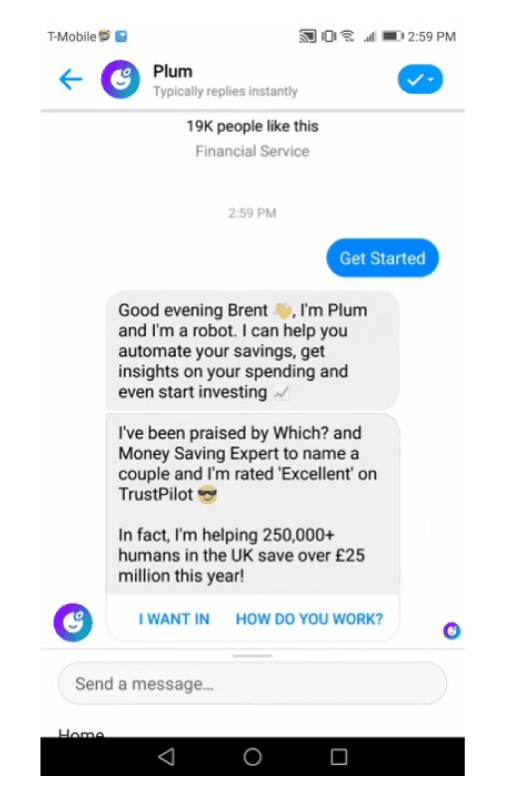
Create webinars to let customers master their skills
Today, webinars are extremely popular due to the value they provide. In this case, user onboarding webinars can help understand your product, how it works, its features, and its benefits. New users can also learn how your product solves problems and provides value.
Let’s take Grammarly, a writing assistance tool, for example. It would be great for new users to learn about its useful features from a webinar about its plagiarism and grammar checker.
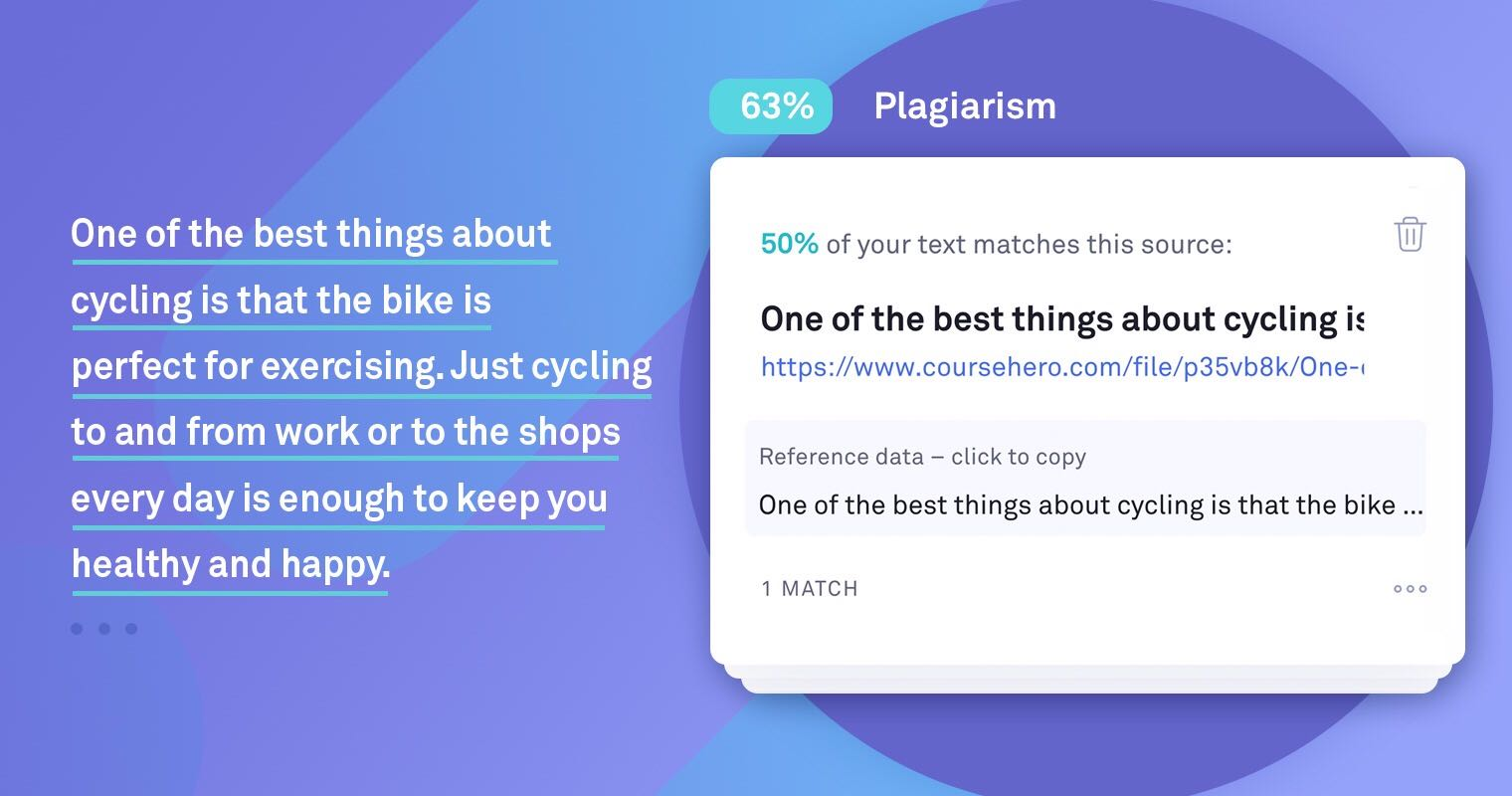
Since examples also play a significant role in understanding the process and inspiring you to create your onboarding program, let’s proceed to the next section.
Examples of Customer Onboarding
- Payoneer and onboarding emails
- actiTIME and product tours
- Pinterest and users’ interests
- Duolingo and gradual engagement
- Wrike and webinars
We’ve prepared several excellent examples from different platforms to inspire you to create a superb onboarding for your new users.
Payoneer and onboarding emails
Payoneer provides businesses, online sellers, and freelancers with a transparent payment platform. The service takes care not only of loyal customers but ensures a seamless experience for its new users. It has successfully implemented email campaigns to welcome new clients on board.
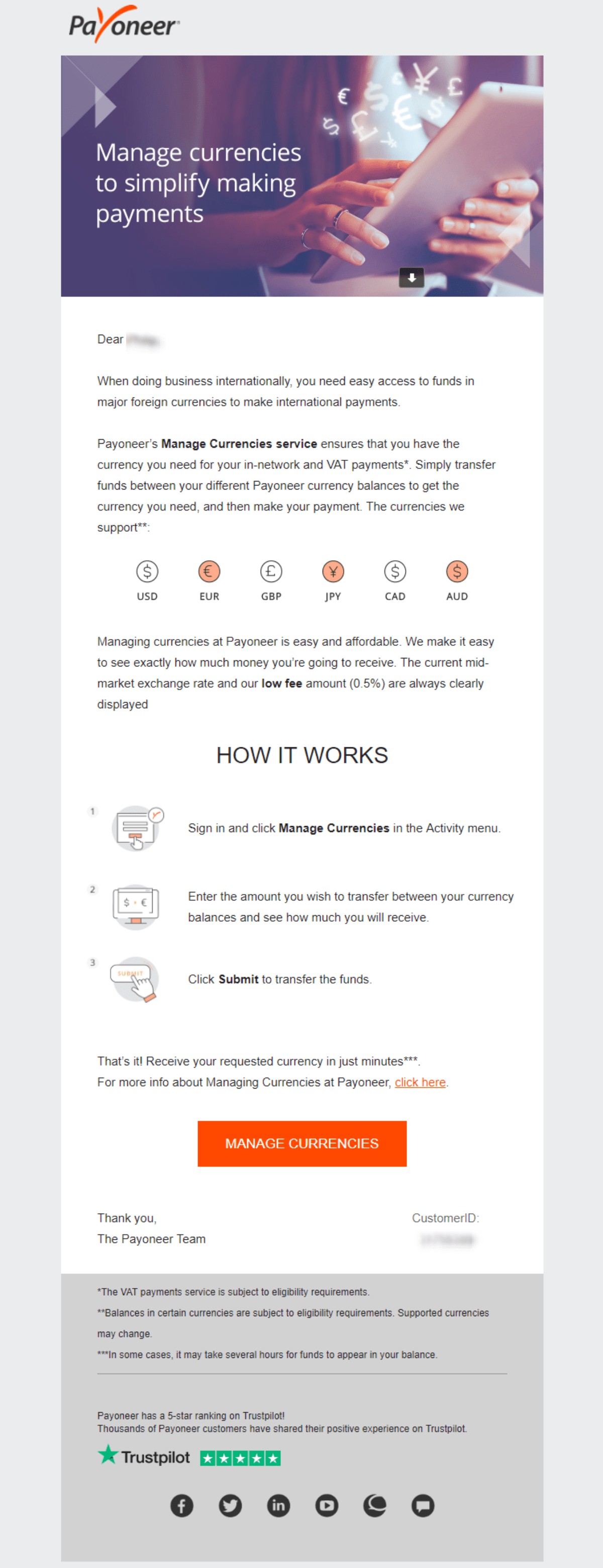
SendPulse saves you from sending emails to new customers manually. With Automation 360, you can create an email flow in advance and send it when a user performs a specific action, for example, a purchase.
In the example below, you can see a welcome email created with our service. A company sends an onboarding email and offers a new subscriber to check out its latest articles after some time.
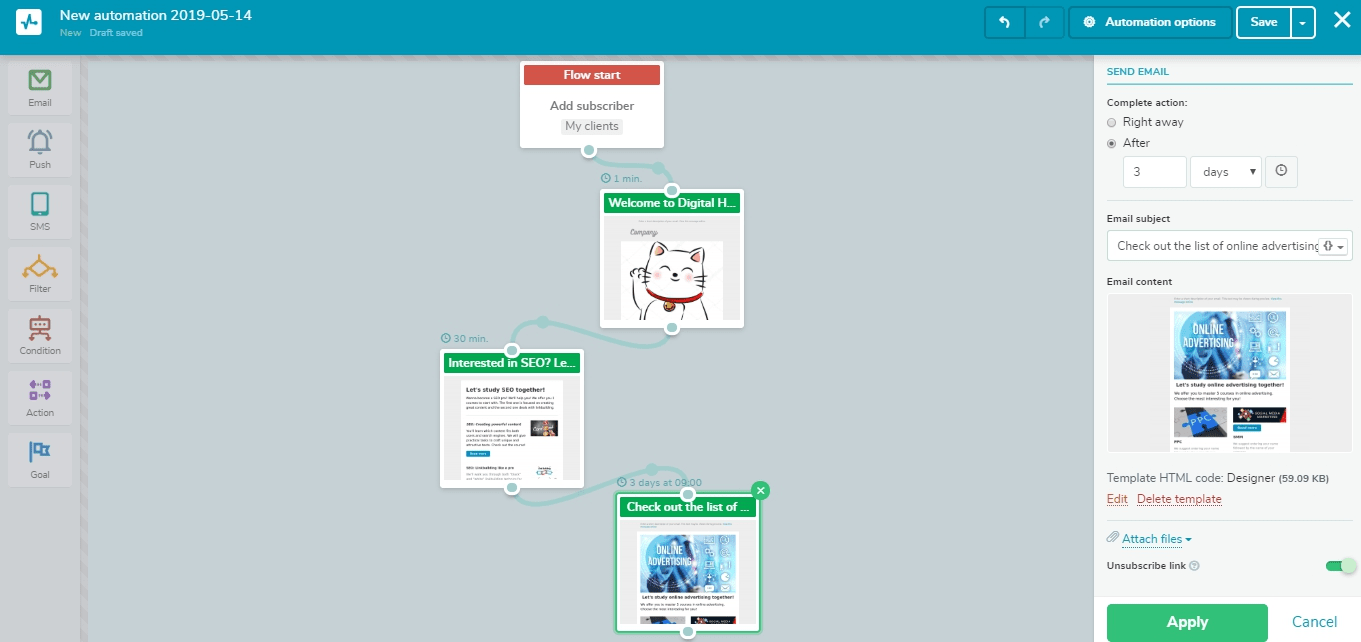
actiTIME and product tours
actiTIME is an excellent service for project management that enables managers to track the progress of their teams’ work and time. The service provides newcomers with a short guide on its website and an introduction video. In this video, users can watch a brief overview of the actiTIME product.
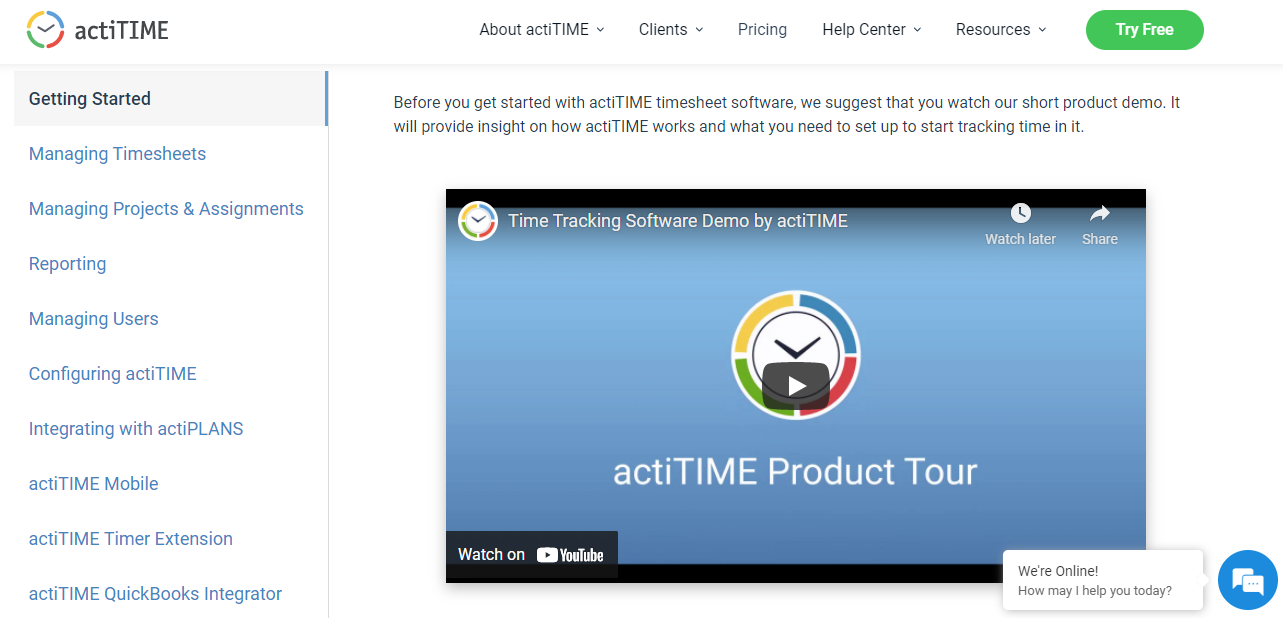
Pinterest and users’ interests
The image-sharing service is a great example of an excellent onboarding process. After the registration, users are asked to answer several questions about their interests. The service works based on the categories users like the most. As a result, Pinterest provides users with everything they need, which is a perfect way to retain customers.
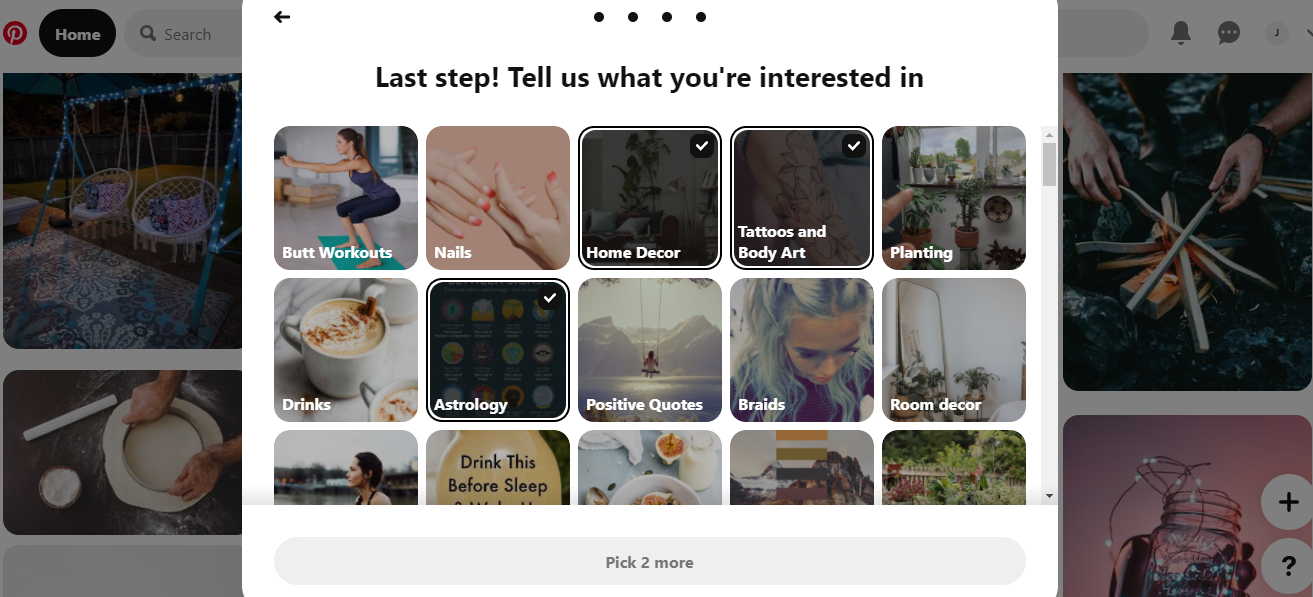
Duolingo and gradual engagement
This language-learning platform invites its users to go through their onboarding even before a signup form. Unlike many other services, Duolingo implements gradual engagement. It moves users through the app slowly and empowers them to experience the value of its platform first. You can set your goals and choose your path to get started.
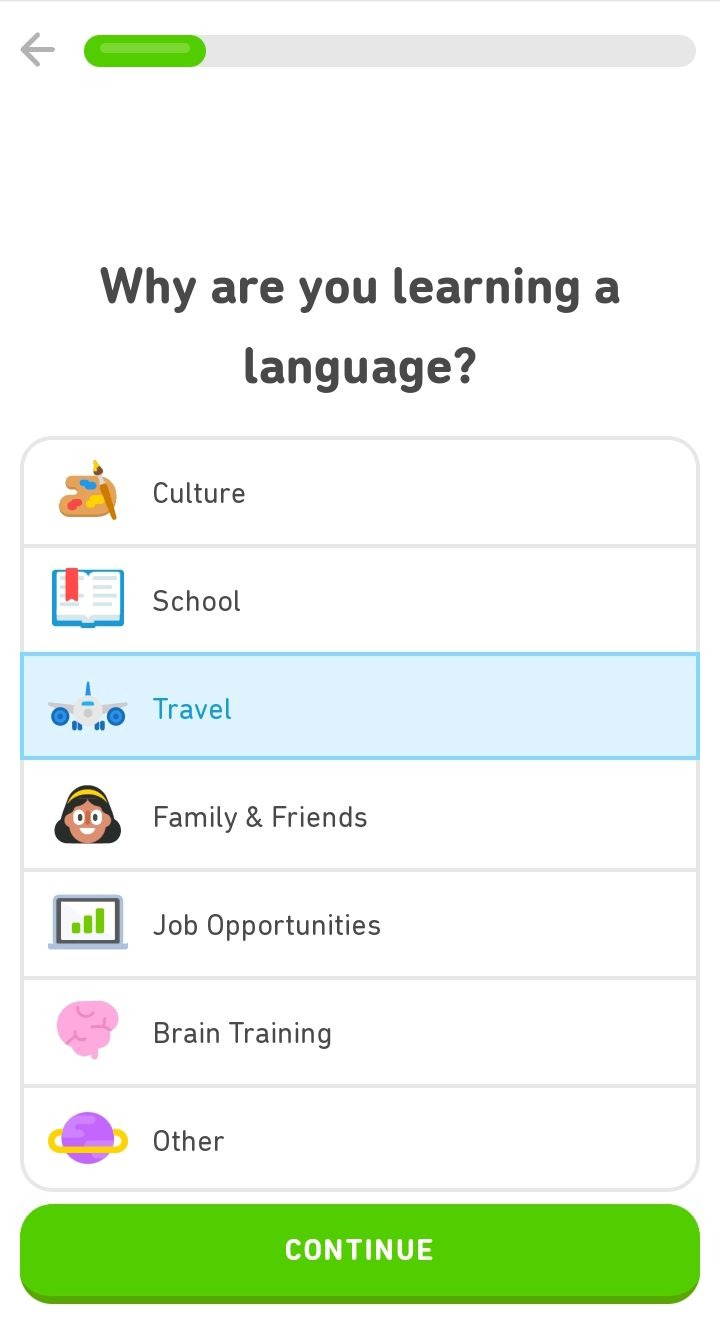
Wrike and webinars
This project management tool invites new users to get started with its webinars. Wrike offers four webinars where its clients can find out how the platform helps marketing teams and how to set up the service.
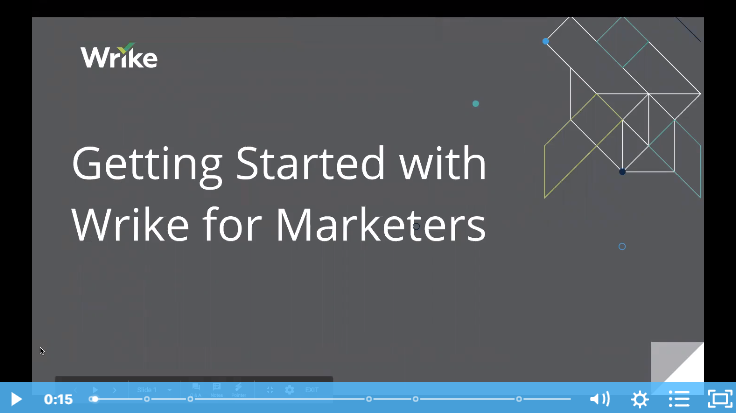
In a nutshell, brands spend time and effort to create a perfect welcome onboarding because it plays a significant role in customer retention and turning users into loyal clients. The most impressive apps and websites ensure that users obtain an excellent user experience using their product, platform, tool, or service. With SendPulse, you can automate the onboarding process with email campaigns, Facebook, Telegram, and Whatsapp chatbots, web push, and SMS.
Resources:
- This article defines the term, covers the importance of customer onboarding, and explains how to create a customer onboarding strategy.
- Here you’ll find five great examples of user onboarding.
- This is a guide to SaaS customer onboarding.
Last Updated: 22.03.2023


or